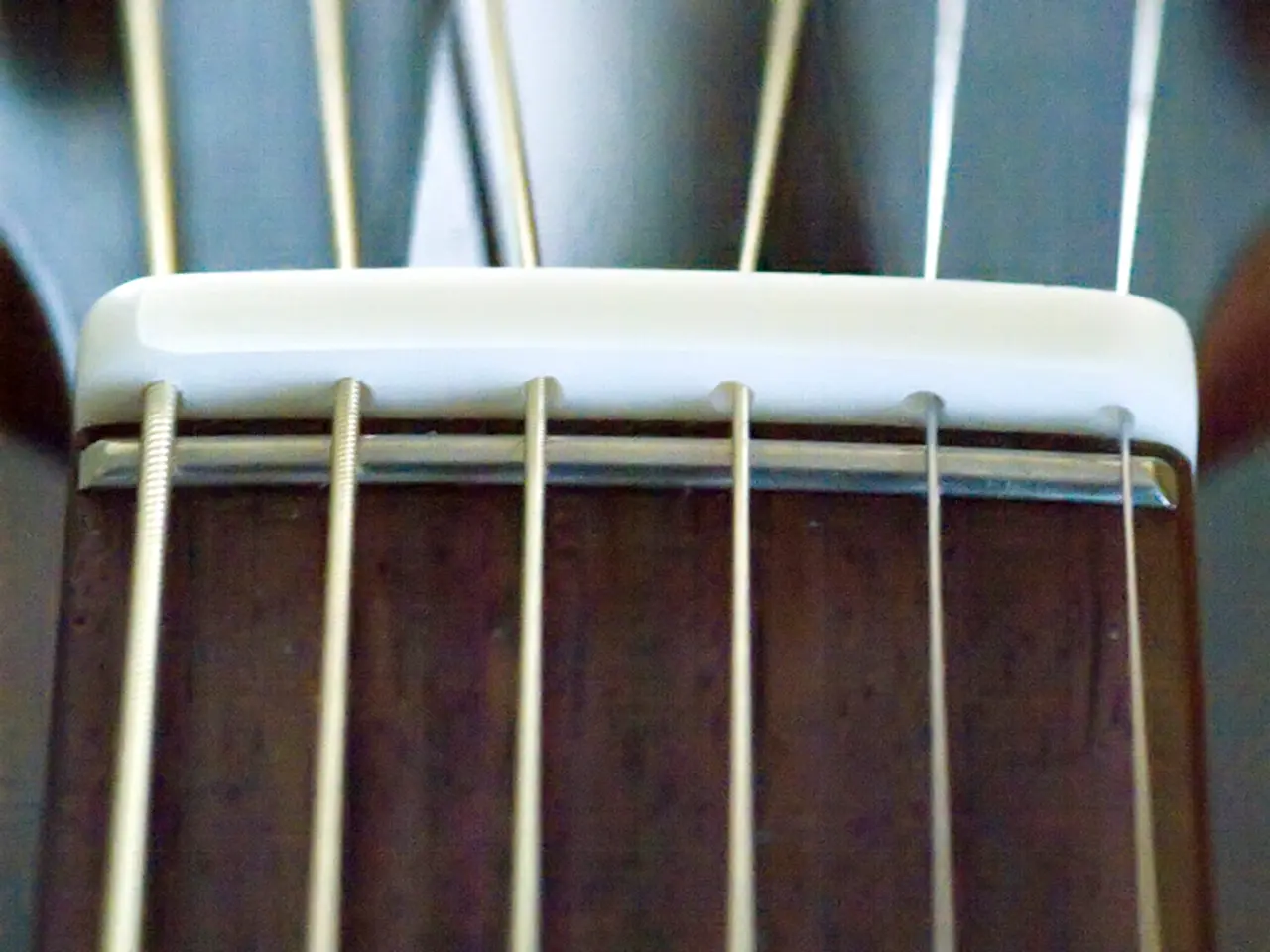"Paul Reed Smith discusses the guitar's essential element, stating its significance surpasses pickups, ultimately shaping the tone"
In the world of electric guitars, Paul Reed Smith (PRS) stands out for its commitment to traditional neck construction and precision craftsmanship. According to the guitar manufacturer, the neck is a crucial aspect for good tone, and PRS believes that optimizing sound and playability starts here.
Paul Reed Smith advocates for multi-ply neck construction, carefully choosing woods like maple for durability and tonal quality. The neck profile, such as the "Wide Thin" shape, is designed to enhance sustain and comfort, positively influencing tone. The neck joint type, like a set neck, is also important for resonance and sustain.
Tuning stability is another area of focus for PRS. The company has innovated on tuning pegs, stating that improvements there can have a significant tonal impact. PRS avoids compromises like headless designs requiring rollers, reflecting their focus on how the neck and related hardware affect overall tone.
Other factors that PRS integrates into their guitar design include the quality of pickups designed for versatility and clarity, such as their TCI pickups. Hardware choices like bridges and tremolos are designed for tuning stability without compromising tone. Wood choices for the body and neck contribute to resonance and sustain, with a mahogany back and maple neck being a common combination.
PRS's approach to neck-making has been refined over the years through collaboration with artists like John Mayer and Mark Holcomb from Periphery. In fact, the company is releasing brand-new guitars each month to celebrate its 40th anniversary.
Paul Reed Smith emphasizes that the neck should not be under excessive tension, except from the strings. He believes that a player's comfort with a guitar is vital for producing a good tone, as it allows them to play at their best. Moreover, how a guitar feels and how it resonates when held are important factors for good tone.
The stronger the neck of a guitar, the better it sounds, according to Paul Reed Smith. Excessive tension can lead to a lack of sustained low mid-range in the instrument. Herman Li, the shredder from DragonForce, has even ripped up PRS's template with his signature guitar.
In summary, Paul Reed Smith's approach to good guitar tone centers on traditional neck construction with precision craftsmanship, combined with advanced but tone-conscious hardware and pickup design. PRS sees the neck not just as a playability factor but as a core contributor to good sustain, resonance, and tuning stability, all vital components of great tone in electric guitars.
- Paul Reed Smith (PRS) has a reputation for its dedication to traditional neck construction and precision craftsmanship in electric guitars.
- The neck, crafted with multi-ply construction and woods like maple, is considered vital for tone by PRS, affecting both sustain and comfort.
- PRS designs their neck profiles carefully to optimize tonality and playability, like the "Wide Thin" shape, and uses set neck joints for improved resonance and sustain.
- The company's commitment to innovation extends to tuning pegs, which they believe can significantly impact tonality without introducing compromises, such as headless designs.
- PRS's selection of pickups, like TCI pickups, and hardware, such as bridges and tremolos, prioritize tuning stability and tonal clarity without sacrificing tone.
- Collaborations with artists like John Mayer and Mark Holcomb have led to refined neck designs and the release of new guitars monthly, as part of PRS's 40th anniversary celebration.







